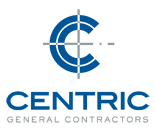In today's very connected world, it's hard to find an industry that is not being touched by technology in some way. In a lot of ways, construction is late to the technology game but its transforming the way we do business. From BIM to robotics, construction practices are evolving. One of the very exciting innovations gaining steam is the drone.
Tele Drone from Centric General Contractors on Vimeo.
Drone footage provided by Khalil Robinson Photographs.
Drones are here to stay. A 2018 Drone Market Sector Report found that construction is the fastest growing sector in commercial drone usage, surging 239% in the last year. Construction, which covers design, building inspection or monitoring, is one of the top three uses for commercial drone-based services, behind aerial photography, surveying and mapping, and geographic information systems (GIS). Given this trajectory, the number of construction companies using drones is expected to continue to grow. As use cases and new job site applications continue to emerge, it's not a stretch to conclude that capturing footage will offer greater value to clients and provide a competitive advantage for firms with developed drone programs.
In the case of our job site located at Telegraph Hill in San Francisco, we are finding drone footage to be tremendously helpful. The Telegraph Hill neighborhood is a residential area situated around Coit Tower, a tourist attraction. Situated on a steep hill, the site poses unique challenges. With limited access points from very congested streets, the opportunity to get a sense of the site's progress is a bit difficult. The decision to capture drone footage on the Telegraph Hill Residences job site was easy to make. For the duration of the project, we are actively taking this opportunity to explore a range of applications to get the most out of this investment. It is also important for us to inspire our team to innovate processes and services through gaining this new perspective.
The following describes our findings to date:
- Enrich Team Engagement: The drone’s survey of the Telegraph Hill construction site allowed us to put the design into context with real conditions. As a result, the footage was an aid for enhanced team engagement. In addition, drone footage is an effective way to coordinate logistics among the many stakeholders involved in job site activities, while also providing progress updates to remote stakeholders.
- Enhance Project Visualization: Drone footage allowed our team and the client to visualize the construction activities and see how the project is progressing while under construction.
- Identify and Reduce Safety and Security Risks: As you can imagine, working on Telegraph Hill is a technical challenge. With the assistance of drone footage, our team was able to gain a helpful perspective for performing safety inspections. It's a tremendous benefit to be able to identify and mitigate potential hazards. Additionally, the footage can be used to monitor locations and quantities of job site assets and materials.
- Monitor Job Site Practices: Drone footage was tremendously helpful in allowing our teams to monitor the performance of work, and then bill accordingly. The footage increases our team’s ability to perform quality inspections in hard to reach areas in a more effective manner.
- Share Your Project Story: At this very moment, drone footage is allowing us to share our exciting project story with you in a blog post.
As far as we can tell, capturing drone footage has been well worth the company’s investment in exploring a range of applications.
Have you ever employed the use of commercial drones. Share your stories with us in the comments section below.
